New CalMac ferry successfully launches into River Clyde
CalMac ferry MV Glen Rosa finally launches on the River Clyde
- Published
A long-awaited CalMac ferry has been launched at Ferguson's shipyard in Port Glasgow.
Crowds cheered as the 3,000-tonne vessel successfully left the slipway, making it the heaviest vessel to have been launched from the Clyde yard.
The MV Glen Rosa is the second of two delayed ferries being built by the nationalised shipyard.
The 102m (335ft) ship was named by newly-qualified welder Beth Atkinson.
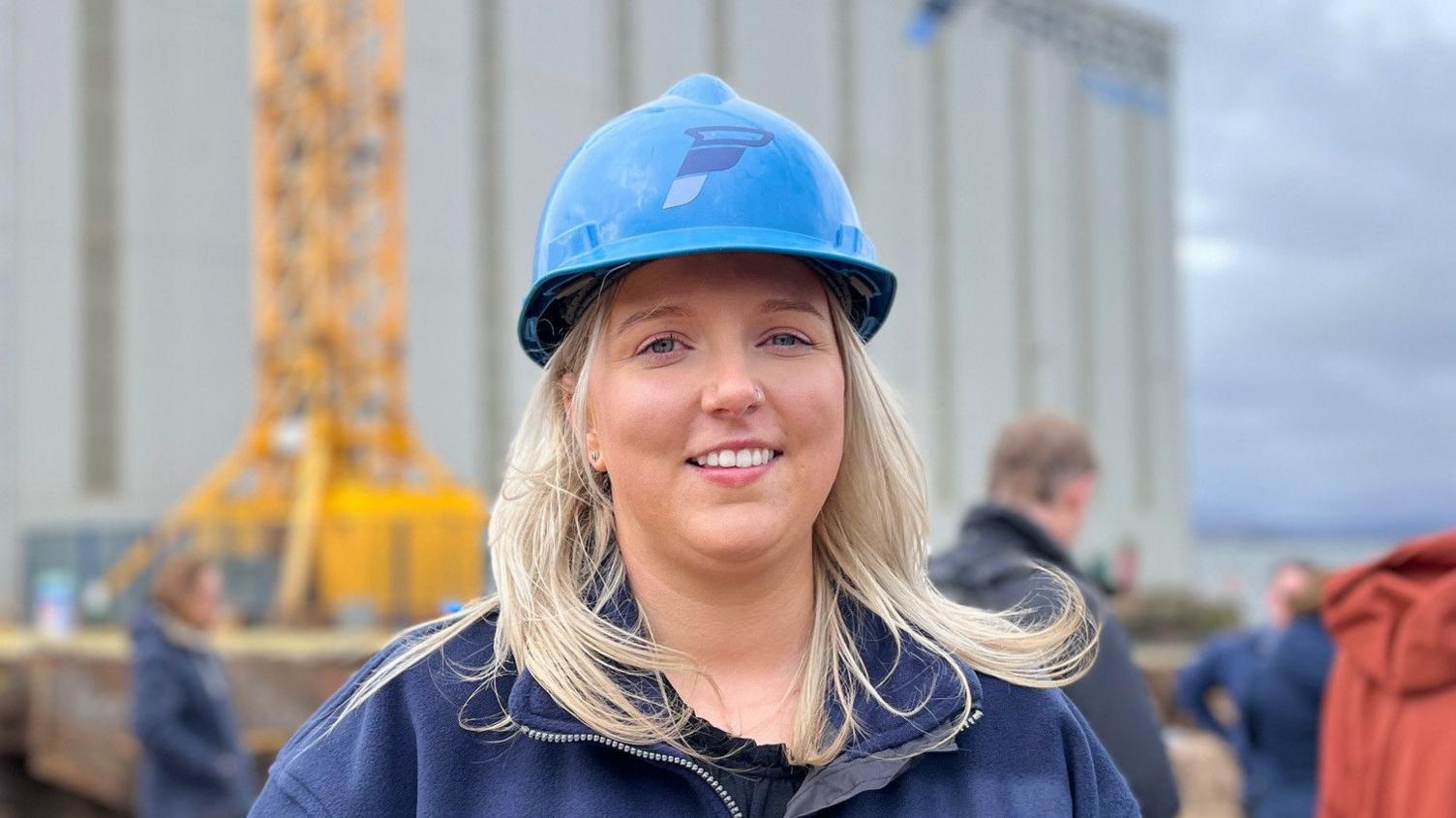
Beth Atkinson who launched the ship had never before even witnessed such an event.
The 28-year-old said: “It was a privilege to launch the vessel. I’ve never seen a ship launch before today.”
The ship will now require more than a year of fitting out work at the quayside before it is ready for delivery.
High winds led to a short delay during the speeches until the river pilot with the waiting tugs decided it was safe enough to proceed.
But once the ceremonial bottle of whisky finally shattered on the bow, the ship descended smoothly into the water to the sound of cheers, klaxons and local MSP Stuart McMillan playing the Skye Boat Song on the bagpipes.
The Ferguson ships nobody talks about
- Published26 November 2023
Cheers as CalMac ferry is launched at Clyde shipyard
- Published8 April 2024
The yard was packed with members of the public who had gathered to celebrate the launch. The numbers were so great that many had to watch from beyond the gates.
Among the onlookers was Paul Gurton and his daughter Annabel who had travelled from Inverkip.
"You get a sense of pride for the local community - and hope for the future. Hopefully there'll be more orders," he said.
"It's something that doesn't happen often on the Clyde anymore."
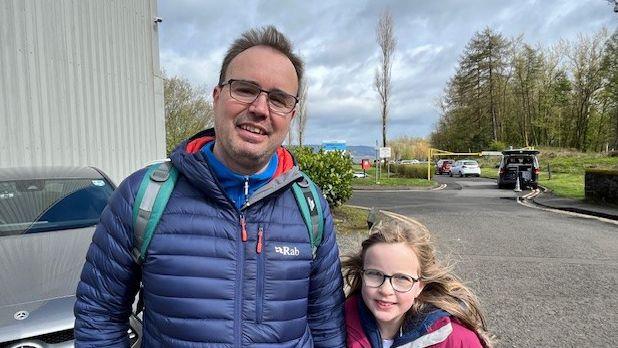
Paul travelled to Port Glasgow with his family to witness the launch
Glen Rosa and its sister ship Glen Sannox are the first liquefied natural gas (LNG) dual-fuel ships ever built in the UK, capable of switching between LNG and marine diesel.
The ships have faced significant design challenges, contributing to repeated delays and extra costs, although recent progress on Glen Rosa has been rapid.
Former Ferguson Marine boss David Tydeman - who was sacked by the company's board a fortnight ago - previously said the yard had "captured" the learning from Glen Sannox, and the build was far less problematic.
Glen Rosa is about 50% heavier than Glen Sannox at launch, an indication of how much more complete the ship is.
While the slipway launch is an important stage in the construction process, work will continue now the ship is afloat, with September next year the current estimated delivery date.
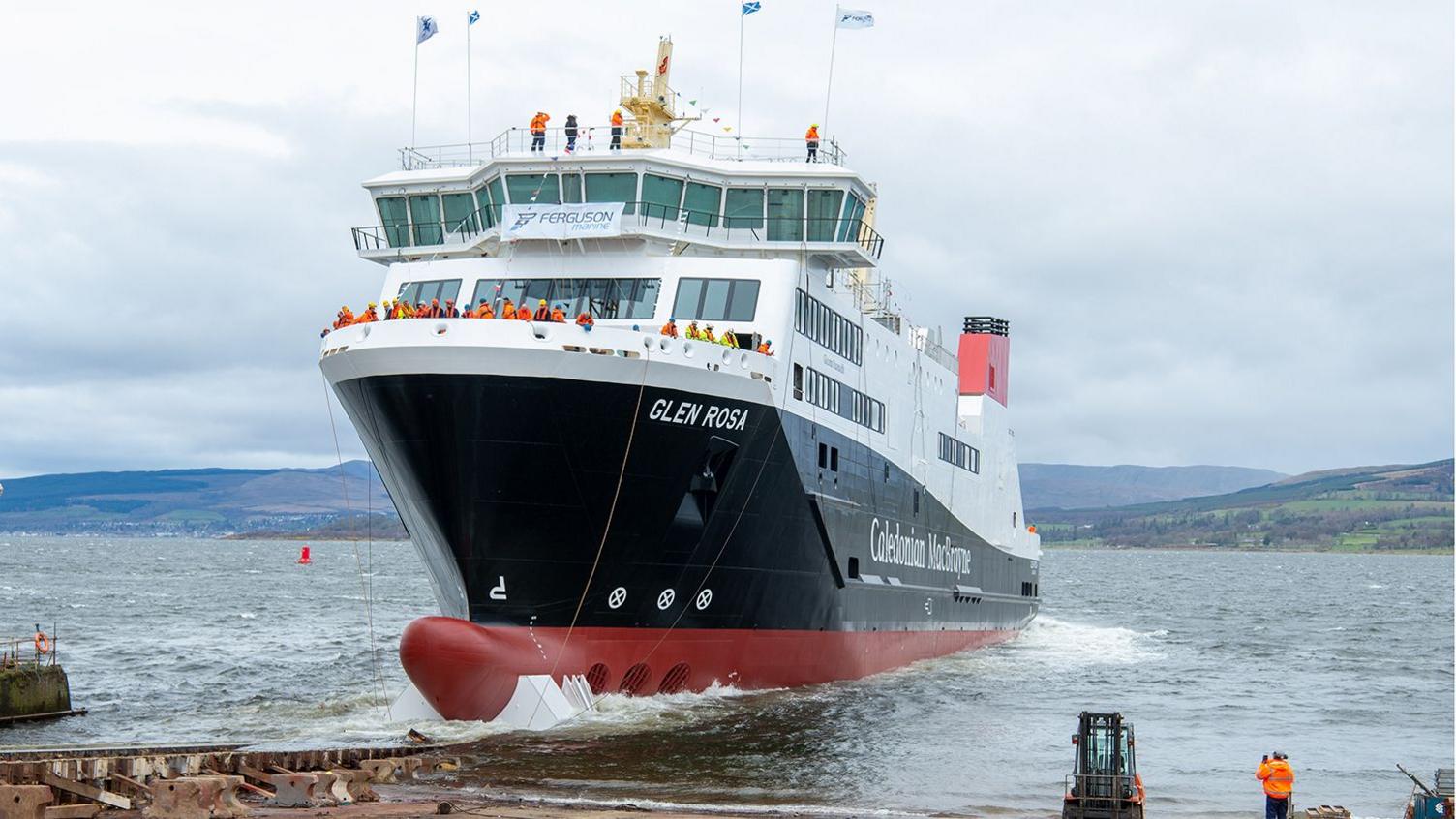
Glen Rosa - which is destined for the Arran route - was launched with a specially-bottled whisky from Ardgowan Distillery.
Welder Beth Atkinson who named the ship was joined on the podium by four other female apprentices who are among over 100 young people trained at Ferguson's in the past 10 years.
Economy Secretary Mairi McAllan attended the launch along with interim Ferguson Marine chief executive John Petticrew.
Ms McAllan called the occasion an "exceptionally special day" and paid tribute to the "proud ship-building history" of Inverclyde.
She said the "magnificent vessel" would play an important role in supporting island communities.
She thanked the Ferguson Marine workers and the people of Inverclyde, saying the Scottish government stood with them during nationalisation and stands with them now.
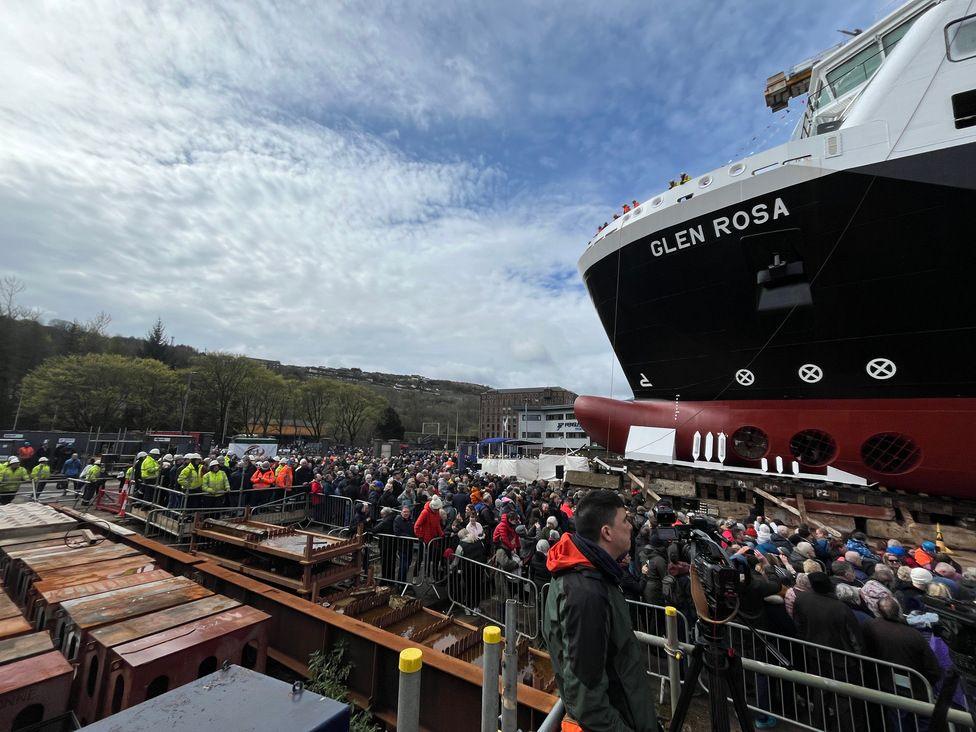
Crowds gathered to see the ship launch in Port Glasgow
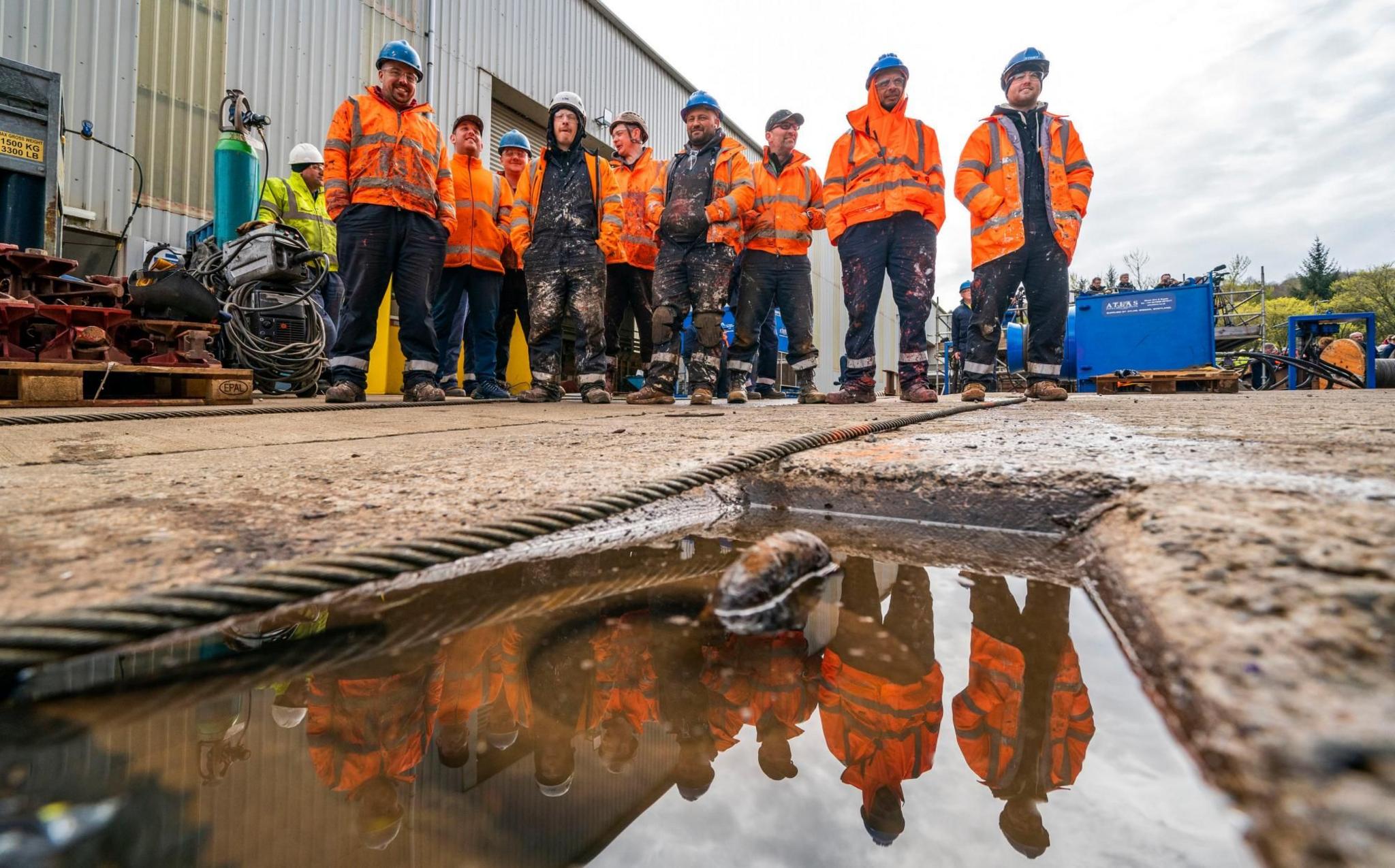
Shipbuilders at Ferguson Marine wait to watch the launch
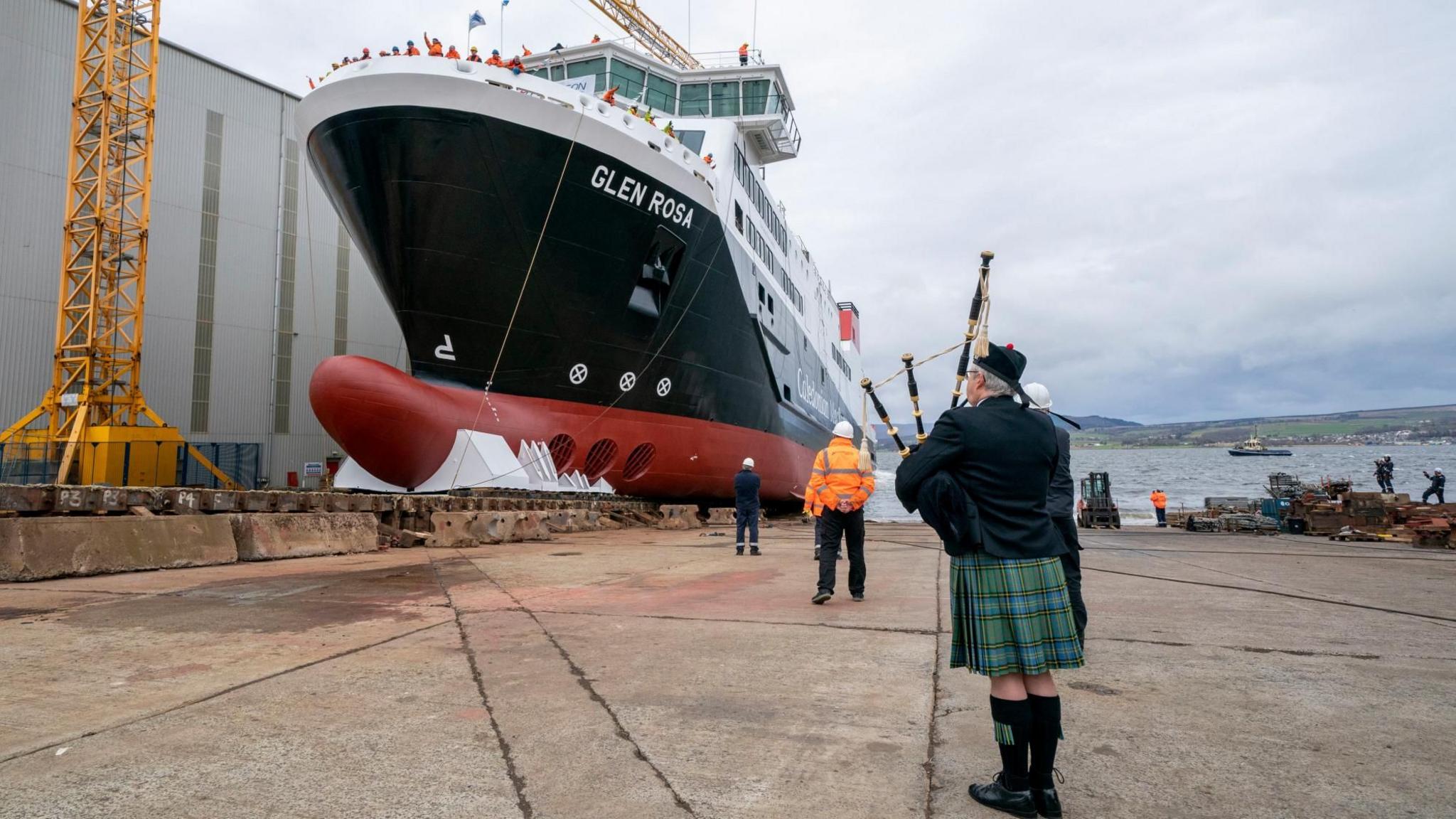
MSP Stuart McMillan played the Skye Boat Song as the ship eased its way down the slipway and into the water
Work on both Glen Sannox and Glen Rosa began in early 2016, but a plan to build them simultaneously was abandoned later that year.
As attention focused on Glen Sannox, the second ship - then known only as Hull 802 - remained part-finished.
Glen Sannox was launched by Nicola Sturgeon in November 2017 in a ceremony also attended by then Transport Minister Humza Yousaf.
It later emerged that steel fabrication had outpaced detailed design work, and a great deal of internal fitting out was still required.
Businessman Jim McColl, whose company Clyde Blowers had rescued the yard from administration in 2014, blamed CMAL for the problems, claiming it had put a flawed concept design out to tender.
CMAL denied that, insisting the problems were due to "catastrophic contractor failure".
The stalemate resulted in the yard falling back into administration in 2019, and it was subsequently nationalised.

Glen Sannox is currently completing sea trials
Glen Sannox has now been moved from the shipyard to nearby Inchgreen and is undergoing sea trials before its LNG systems are commissioned.
The ship was due for delivery to CMAL by the end of May, but a further delay is expected to be confirmed by the new chief executive shortly.
BBC News understands that work on the LNG pipework by specialist contractors is taking longer than expected.
The first of four other ferries being built in Turkey for CalMac, which have a more conventional propulsion system, is due for delivery in October.
Ferguson's shipyard has no more ship orders on its books, but is awaiting a decision on whether it will build a fleet of smaller CalMac vessels similar to ones it has successfully delivered in the past.
In media interviews after the launch, the economy secretary made no promises on that but said she was about to review a business case for new investment in the yard designed to make it more competitive in the open market.
Ms McAllan said: "I have committed that ministers will leave no stone unturned when it comes to securing that future for Ferguson Marine."
Interim Ferguson Marine chief executive John Petticrew said they were going "aggressively" after the CalMac small vessels contract - but that there was potential for other work.
"We've had four or five significant shipping companies come in. They're very interested and there are companies who are willing to pay a small premium to build in Scotland," he said.